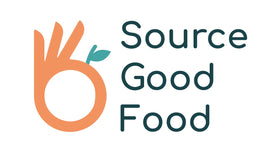If you think edible flowers is a novel trend, think again!
Ancient civilizations have been using various flowers to brew teas, make jellies and nectars or eat them 'in natura' since time immemorial.
One such extensively found and used edible flower is the Rose. Ask any Indian about a summer memory and they will recall have rose sherbet or rose petal jam being administered to them by their doting grandmothers. According to Ayurveda, rose as a food ingredient is compatible with all body types and has both cooling and warming effects on the body. If there ever was a multi-faceted, all-rounder ingredient, it has to be rose.
Roses have a distinctive sweet and aromatic flavour with colours ranging from white, to mild pinks and vibrant reds. Therefore, it comes as little surprise that amongst all edible flowers, roses enjoy highest consumer acceptance.
Rose species used for consumption
Not all rose species and varieties are edible. Food and beverage manufacturers look for Rosa alba L., Rosa centifolia L., Rosa damascena Mill., Rosa gallica L. and varieties of these species. Some other species like Rosa gabea and Rosa canina also boast of medicinal properties. Under the American Federal Food, Drug, and Cosmetic Act, there are only certain Rosa species, varieties, and parts are listed as generally recognized as safe (GRAS).
Rose extracts may have anti-oxidant and anti-microbial properties
Hydromenthol extract of roses has shown the highest antioxidant and anti-microbial activity in comparison to other flower extracts. The anti-microbial activity was most potent against a vast majority of bacteria with low values of minimum inhibitory concentration (MIC) for E. Coli, K. pneumoniae, M. morganii and P. aeruginosa. In some animal studies, rose extracts inhibited the growth of tumor cells in cervical and hepatocellular carcinoma.
Although these medicinal properties are recent discoveries, edible rose has been used to make a variety of food products like candies, syrups, squashes, etc. since 3000BCE
Roses in mainstream food
Rose water has a very distinctive flavour and is used in Middle Eastern, Persian, and South Asian cuisine—especially in sweets such as Turkish delight, barfi, baklava, halva, gulab jamun, kanafeh, and nougat. Rose petals or flower buds are sometimes used to flavour ordinary tea, or combined with other herbs to make herbal teas. A sweet preserve of rose petals called Gulkand is common in the Indian subcontinent. The leaves and washed roots are also sometimes used to make tea.
In France, there is much use of rose syrup, most commonly made from an extract of rose petals. In the Indian subcontinent, Rooh Afza, a concentrated squash made with roses, is popular, as are rose-flavoured frozen desserts such as ice cream and kulfi.
The flower stems and young shoots are edible, as are the petals (sans the white or green bases). The latter are usually used as flavouring or to add their scent to food. Other minor uses include candied rose petals.
Rose creams (rose-flavoured fondant covered in chocolate, often topped with a crystallised rose petal) are a traditional English confectionery widely available from numerous producers in the UK.
Rose hips are high in vitamin C, are edible raw, and occasionally made into jam, jelly, marmalade, and soup, or are brewed for tea. They are also pressed and filtered to make rose hip syrup. Rose hips are also used to produce rose hip seed oil, which is used in skin products and some makeup products.
Medicinal Properties of Rose
The rose hip, usually from R. canina, is used as a minor source of vitamin C. The fruits of many species have significant levels of vitamins and have been used as a food supplement. Many roses have been used in herbal and folk medicines. Rosa chinensis has long been used in Chinese traditional medicine. This and other species have been used for stomach problems, and are being investigated for controlling cancer growth. In pre-modern medicine, diarrhodon (Gr διάρροδον, "compound of roses", from ῥόδων, "of roses") is a name given to various compounds in which red roses are an ingredient.
With so many applications and properties of rose, food formulation scientists and manufacturers have much scope for innovation. Putting out a product which has an unconventional flavour such as rose is bound to set your product apart. With most consumer trends now shifting to traditional and indegineous foods and ingredients, using whole rose petals, extracts and water will ne a good place to start as they enjoy the most consumer acceptance.
Go, put on your thinking caps on!
Visit www.sourcegoodfood.com for more information
Sources:
1. Jacqueline Aparecida Takahashi, Flávia Augusta Guilherme Gonçalves Rezende, Marília Aparecida Fidelis Moura, Laura Ciribelli Borges Dominguete, Denise Sande
2. Angier Bradford (1974) Field Guide to Edible Wild Plants Harrisburg PA Stackpole Books p.186
3. Generally Recognised as Safe (GRAS) 6 September 2019
4. Rosa chinensis China Rose PFAF Plant Database. Pfaf.org Retrived 13 March 2013



